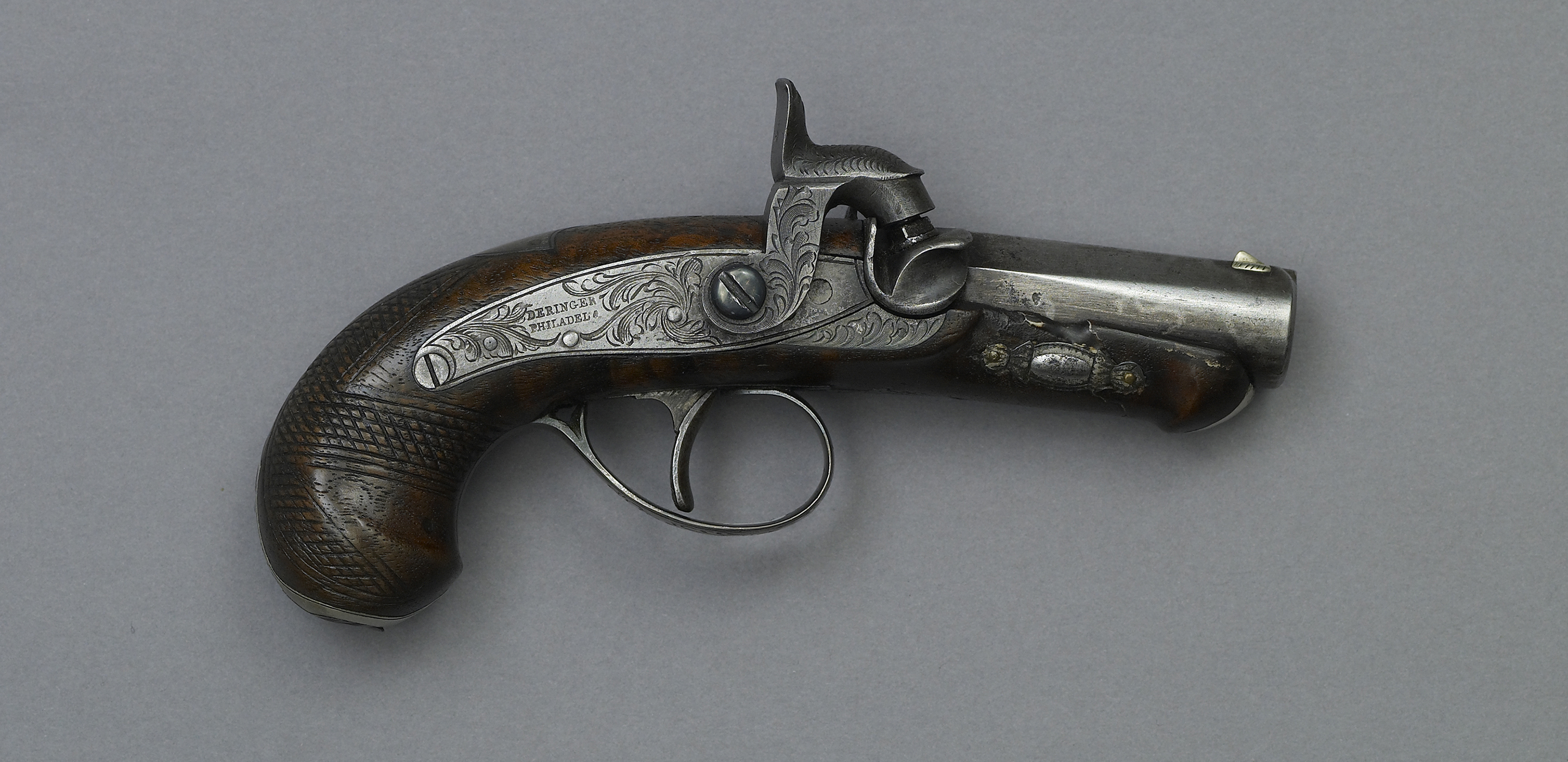
To See or Not To See: Displaying the Deringer
When a museum designs an exhibit, the curators must decide what will be included in or excluded from the display. Imagine you got to design an exhibit about the assassination of President Lincoln. Should the Deringer pistol used by John Wilkes Booth to shoot Abraham Lincoln be displayed in the new exhibit? What do you think?
Four American presidents have been assassinated, all by firearms. Two of the murder weapons are on public display; two are not.
- The pistol used to shoot Abraham Lincoln in 1865 is currently displayed in Ford’s Theatre.
- The pistol used to shoot James Garfield in 1881 was lost by the Smithsonian.
- The pistol used to shoot William McKinley in 1901 is currently displayed in the Buffalo History Museum.
- The rifle used to shoot John F. Kennedy in 1963 is held at the National Archives and is not displayed to the public.
This is a teacher-directed activity. We also offer a student-directed version of this lesson.
Common Core Standards
CCSS.ELA-LITERACY.RH.9-10.2
Determine the central ideas or information of a primary or secondary source; provide an accurate summary of how key events or ideas develop over the course of the text.
CCSS.ELA-LITERACY.RH.11-12.2
Determine the central ideas or information of a primary or secondary source; provide an accurate summary that makes clear the relationships among the key details and ideas.
| Learning Objectives | Students will determine the central ideas in a primary source Students will perform close readings of letters and photographs Students will examine how prevailing opinion has changed over time Students will advocate their opinions in writing |
| Guiding Questions | Who decides what gets displayed in a museum? Should a weapon used in an act of violence be displayed in a museum? How has this decision been viewed over time? How should artifacts be preserved? Should the public have access to these artifacts? |
Lesson Activities
- Lesson Activity One: A Close Look at the 1937 Photographs
Arrange students into small groups. Distribute the 1937 photograph of Edwin Pitts with the artifacts and the Library of Congress primary source analysis tool to each student. - Lesson Activity Two: A Close Reading of the June 10, 1931, Letter
The teacher leads a close reading of the letter with the entire class. Select a student to read aloud a definition from the glossary each time an unfamiliar word or term is encountered. - Lesson Activity Three: A Close Reading of the June 29, 1931 Letter
Now the teacher leads a close reading of the response letter from General Bridges with the entire class. - Lesson Activity Four: Your Turn
Imagine you are the curator of Ford’s Theatre Museum and the exhibits are to be redesigned.
Lesson Activity One:
A Close Look at the 1937 Photographs
Arrange students into small groups. Distribute the 1937 photograph of Edwin Pitts with the artifacts and the Library of Congress primary source analysis tool to each student. Students should work together to observe, reflect and question what they see in the photograph. They should jot down their findings on the back of the sheet. Call on tables to report out on what they found.
Share with them that this is Edwin Pitts, Chief Clerk of the Judge Advocate General’s Office in the U.S. Department of War. In 1937 these artifacts were still in possession of the War Department and were stored in a trunk in Pitt’s office.
- Are these artifacts being properly stored and handled?
- Should the public be able to see these artifacts?
- If you had a precious artifact should you be able to sell it, or should it be in a museum?
- Now show them the photo of Pitts aiming the derringer.
- Is he properly handling this artifact?
Lesson Activity Two:
A Close Reading of the June 10, 1931, Letter
The teacher leads a close reading of the letter with the entire class. Select a student to read aloud a definition from the glossary each time an unfamiliar word or term is encountered. Discuss these prompts with the group:
- What is U.S. Grant, III, asking for in his letter?
- Why does he want what he is asking for?
- Do you think what he is asking for makes sense? Why or why not?
Lesson Activity Three:
A Close Reading of the June 29, 1931 Letter
Now the teacher leads a close reading of the response letter from General Bridges with the entire class. Select a student to read aloud a definition from the glossary each time an unfamiliar word or term is encountered. Discuss these prompts with the group:
- What was decided in July 1925 about displaying relics of the Lincoln assassination?
- What were the reasons for that decision?
- What was General Bridges’ decision in 1931?
- Do you agree with General Bridges? Why or why not?
Lesson Activity Four:
Your Turn
Imagine you are the curator of Ford’s Theatre Museum and the exhibits are to be redesigned. Your job is to select what will be in the new exhibits. You must decide if the derringer pistol used by John Wilkes Booth to shoot Abraham Lincoln should or should not be displayed in the new exhibits. What do you think?
- As a class, discuss how have different people’s feelings and thoughts about the assassination artifacts changed over time? What factors may have contributed to this change?
- Individually, write a two-paragraph letter to the Curator of the Ford’s Theatre Museum, giving your opinion: Should the derringer be on display or not? Provide at least two reasons to support your opinion.
What You Need
To complete the below activities you will need the following materials, in addition to pencils or pens and one sheet of paper for each student.
